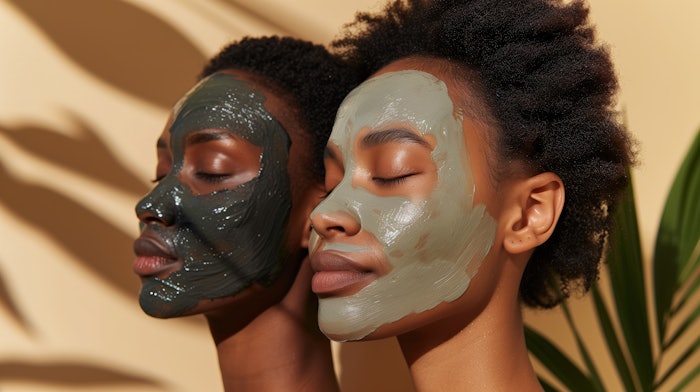
As an award-winning master educator, licensed esthetician and business mentor with over 15 years in the industry, one of the most overlooked topics I continue to see in both classrooms and treatment rooms is a deep, evidence-based understanding of skin of color. While the skin care industry has made strides in inclusivity, many estheticians still feel underprepared or even intimidated when working with melanin-rich skin.
This article is only available to registered users.
Log In to View the Full Article
As an award-winning master educator, licensed esthetician and business mentor with over 15 years in the industry, one of the most overlooked topics I continue to see in both classrooms and treatment rooms is a deep, evidence-based understanding of skin of color. While the skin care industry has made strides in inclusivity, many estheticians still feel underprepared or even intimidated when working with melanin-rich skin.
Let’s be clear, skin is skin, but skin of color deserves specific knowledge, because its unique structure and function make it more susceptible to certain conditions and more reactive to incorrect treatments. With the right education and approach, estheticians can confidently serve a diverse clientele, build trust and deliver transformative results.
Why Treating Skin of Color Requires Specialized Knowledge
Skin of color, defined as Fitzpatrick skin types IV through VI, contains more active melanocytes and a more compact stratum corneum. This makes it more resilient in some ways, yet also more prone to post-inflammatory hyperpigmentation (PIH), keloid formation and sensitivity to inflammation or trauma.
A basic “one-size-fits-all” approach can result in unintended damage or dissatisfaction. This is why education is key, not only to protect your clients, but to grow your confidence and your business.
Common Missteps in Treating Melanin-Rich Skin
One of the most common mistakes I see estheticians make is overtreating. Over-exfoliation, aggressive use of acids and lack of barrier repair protocols are leading causes of hyperpigmentation and sensitization in skin of color.
Here are a few critical missteps to avoid:
- Using high-percentage AHAs too soon without prepping the skin
- Ignoring inflammation as a trigger for pigmentation
- Assuming all acne or texture must be treated aggressively rather than progressively
- Failing to adjust modalities like microneedling, lasers or peels for melanin-rich skin
Ingredients That Work—and Those to Avoid
In my practice and mentorship programs, I emphasize a “treat and protect” philosophy. You can’t just lighten dark spots, you must strengthen the skin barrier and reduce inflammation to prevent future ones.
Go-to ingredients:
- Niacinamide: Brightens without irritation and supports the barrier
- Azelaic acid: Anti-inflammatory and effective for acne, rosacea and pigmentation
- Mandelic acid: A gentler AHA that exfoliates without disrupting melanocyte activity
- Licorice root and kojic acid: Botanical brighteners that help fade hyperpigmentation
Avoid or proceed with caution:
- High-strength glycolic acid
- Unbuffered lactic acid
- Hydroquinone (especially long-term use without supervision)
Build Trust Through Education
When working with skin of color, your results matter, but so does your communication. Clients with deeper skin tones have often had negative experiences in both medical and beauty spaces. They are more likely to ask in-depth questions and want to feel seen and understood.
Use these opportunities to educate:
- Show clients how inflammation leads to pigmentation.
- Explain the difference between lightening vs. brightening.
- Outline a clear, progressive plan and avoid promising overnight results.
This not only builds rapport, it builds retention.
Business Benefits of Cultural Competence
Being highly skilled in treating skin of color isn’t just ethical, it’s profitable. Estheticians who specialize in underserved markets often become go-to experts in their community, increasing referrals, brand trust and opportunities for media features, speaking engagements and retail growth.
In my own business, embracing this niche helped me scale my educational brand, teach advanced virtual classes like Melanin Mastery and launch inclusive skin care retail partnerships. Representation matters, and so does preparation.
Tips for Estheticians Ready to Grow in This Area
- Invest in education that focuses on multicultural skin (beyond textbook basics).
- Audit your skin care lines. Are they tested on diverse skin types? Do they offer solutions for PIH or sensitive skin?
- Create content that speaks to skin of color. Social media posts, blogs or videos that demonstrate your understanding will attract the right clients.
- Practice cultural humility. Ask, listen and never assume.
Final Thoughts
To serve skin of color is to honor both its beauty and its biology. When we as professionals expand our skill sets to include diverse skin tones, we don’t just become better estheticians—we become inclusive, informed and empowered leaders in this industry.
There is room for every shade in the skin care space, and when you treat melanin-rich skin with intention, education and excellence, you won’t just see results on your client’s face—you’ll see them in your business growth, your confidence and your legacy.










